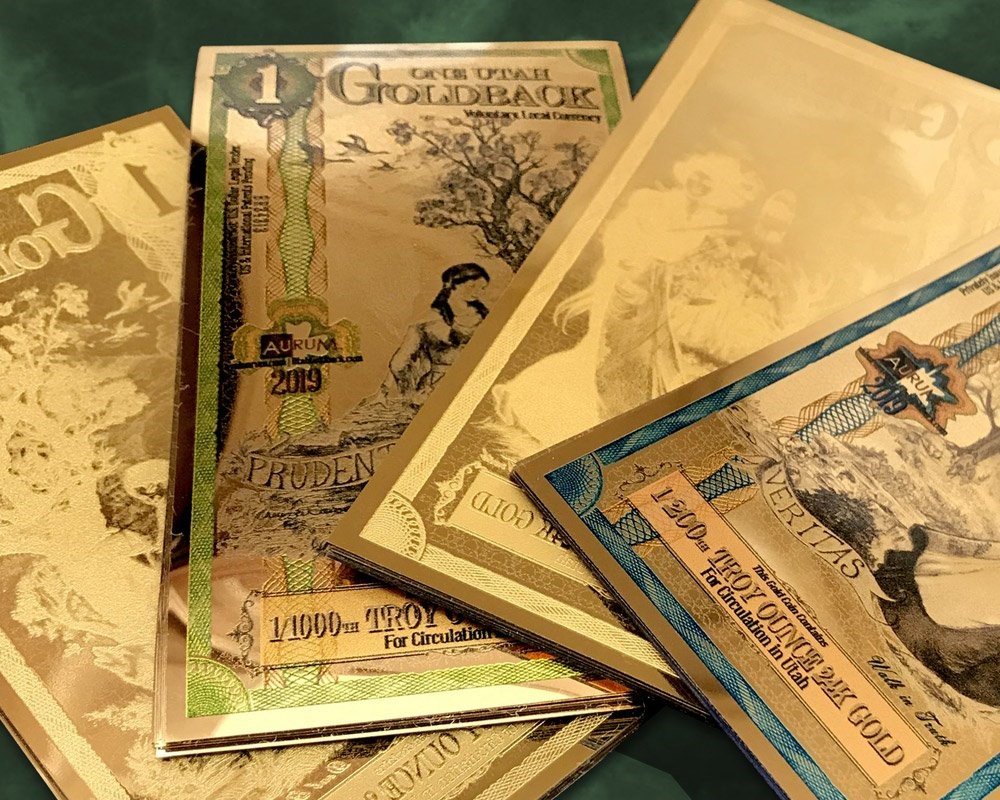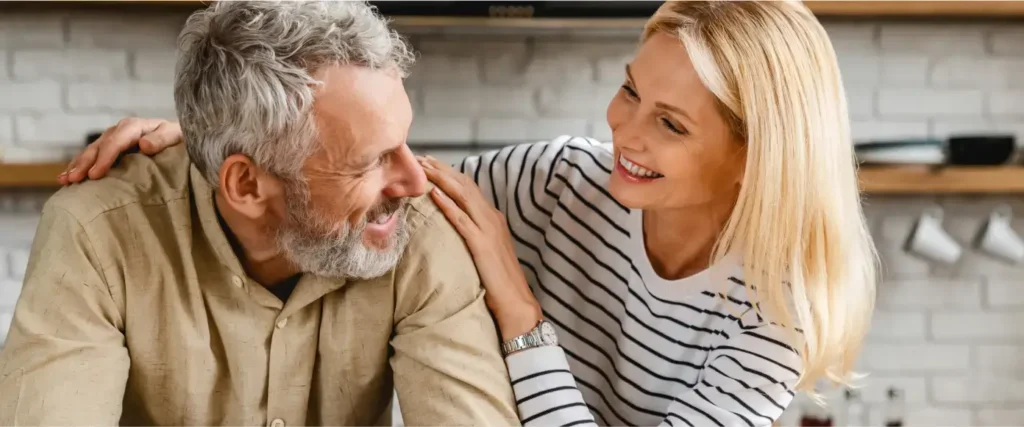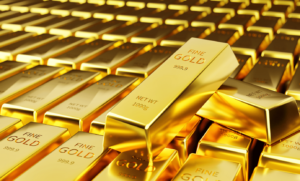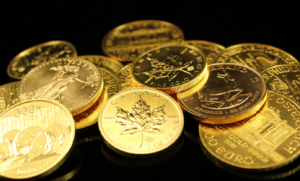Goldbacks represent an innovative form of currency, blending the traditional value of gold with the practicality of paper money. They are privately issued in various denominations, each containing a precise amount of 24-karat gold.
Unlike conventional currency, Goldbacks are crafted using a thin layer of gold leaf, making them fungible and desirable for collectors and investors.
The concept of Goldbacks is rooted in creating a durable and intrinsically valuable form of currency that can serve as an alternative to traditional fiat money.
In use across several states, Goldbacks complement the existing monetary system, garnering attention for their unique properties and convenience as legal tender.
They are available in various denominations, allowing for transactions of different values with gold as the underlying asset.
Despite being relatively new to the market, these notes offer an alternative perspective on currency and value, drawing interest from those seeking stable assets amidst economic fluctuations.

Goldbacks Key Takeaways
- Goldbacks combine gold’s inherent value with traditional currency features.
- Several U.S. states recognize Goldbacks as a valid form of complementary currency.
- Goldbacks are notable for their unique manufacturing process and intricate designs.
Goldback Origins and Concept
This section discusses the inception and design of Goldbacks, intricately crafted gold notes with denominations representing virtues fabricated using innovative technology.
Historical Background
Gold has long been a symbol of wealth and stability. Goldbacks emerged as a novel approach to integrating gold into daily transactions. Designed within the United States, they were introduced by Goldback, Inc. in Utah in 2019.
Goldbacks are not merely ornamental but are intended to function as local currency, serving as an alternative to traditional fiat money.
Goldback Design and Symbolism
Each Goldback gold note is embossed with intricate artwork depicting significant virtues like Prudence, Liberty, and Justice. The artwork is more than decorative; it embeds a narrative into the currency to inspire and remind the holder of these foundational values. The design process was meticulous, with the concept art playing a crucial role in establishing the thematic focus for these denominations.
Goldbacks Development
Goldbacks are produced using proprietary technology developed by Valaurum. This technology efficiently creates thin gold layers within a durable polymer coating, making it possible to manufacture gold notes in various denominations and use gold in tiny, interchangeable increments.
The gold weight in a single Goldback can vary based on the denomination, thus broadening its accessibility and use in everyday commerce.
Are Goldbacks Legal?
Exploring the intricacies of Goldbacks unveils their unique position at the intersection of legal frameworks and economic functions. This section dissects their status within legal tender laws, their dual nature balancing currency and commodity, and potential economic advantages compared to fiat money.
Goldbacks Legal Tender Status
Goldbacks are not federally recognized as legal tender in the United States, which means they cannot legally be required to be accepted as payment for debt. However, the Utah Legal Tender Act permits Goldbacks to be a voluntary currency within the state. Other states have similar legislative frameworks, which classify Goldbacks as a complementary currency to government-issued money.
Goldbacks Currency vs. Commodity
Goldbacks straddle the line between currency and commodity. Each note is crafted from a precise amount of 24-karat gold and is measured in troy ounces. While this imbues Goldbacks with an intrinsic value akin to a commodity, they are designed for use as real money in everyday transactions within the communities that accept them.
Goldback Advantages Over Fiat Currency
- Inflation Resistance: Goldbacks maintain value through gold’s historically low volatility compared to fiat currencies.
- Tangible Asset: Physical gold content offers a tangible asset, which contrasts with the concept of fiat money as a government-issued currency without intrinsic value.
Goldback Manufacturing and Aesthetics
Goldbacks merge the value of pure gold with artistic expression through a meticulous manufacturing process and dedication to design. They are a medium of exchange and embody aesthetic qualities and virtues.
Goldbacks Production Process
Goldbacks are created using 24-karat gold deposited onto a polymer foundation. Production starts with a precise amount of gold bombarded under a vacuum to adhere to the polymer sheeting.
This layered structure is then printed upon by the mint named Valaurum, which specializes in producing these innovative forms of currency.
Denominations are a vital aspect of Goldbacks, with each variation representing a different weight and, therefore, a different value of gold content. For instance, denominations come in units that are fractions of an ounce of pure gold.
Goldback Artistic Features
Each Goldback is beautiful, designed with intricate artwork that differentiates the denominations and incorporates symbolic virtues. The designs are carefully crafted and printed in rich detail onto the 500-foot rolls of polymer, resulting in a functional and visually appealing currency.
These artistic features are not just for show; they add to the utility of the Goldback as a currency, ensuring each note is unique and challenging to counterfeit.
The combination of durability offered by the polymer and the value inherent in the gold content establishes the Goldback as both a practical and attractive monetary instrument.
Goldbacks Denominations and Designs

Goldbacks are innovative gold currency notes available in five denominations, each representing a fractional amount of gold. These denominations correspond to specific weights of 24-karat gold and feature distinctive artwork that often carries cultural and historical themes related to the state they represent.
The denominations and their respective gold content are as follows:
- 1 Goldback: 1/1,000 of a troy ounce of gold
- 5 Goldbacks: 1/200 of a troy ounce
- 10 Goldbacks: 1/100 of a troy ounce
- 25 Goldbacks: 1/40 of a troy ounce
- 50 Goldbacks: 1/20 of a troy ounce
The artwork on each Goldback is unique and embeds symbols and virtues pertinent to the state depicted. For instance, the Goldback series includes representations that range from emblematic figures to historic events, which are layered between two sheets of transparent polyester for protection and durability.
Here is a brief overview of the artistry involved:
| Denomination | Artistic Elements | State Significance |
|---|---|---|
| 1 Goldback | Iconic imagery | State emblem |
| 5 Goldbacks | Cultural symbols | Historic value |
| 10 Goldbacks | Notable figures | Legacy |
| 25 Goldbacks | Natural landmarks | Geography |
| 50 Goldbacks | Symbolic Virtues | Ideals |
Purchasers and collectors appreciate Goldbacks for their intrinsic gold value and the artful presentation and storytelling each note offers.
Goldback States
The Goldback initiative has seen a series of local currencies introduced across various states, each featuring a state-specific line of gold notes with intrinsic value.
Utah Goldbacks Series
Utah pioneered the local currency movement, becoming the first state with a tailored series of Goldbacks. The Utah Goldback is a voluntary local currency consisting of a thin layer of gold within a polymer coating, amplifying its tangible value and practicality as an alternative currency.
Nevada Goldback
Following Utah’s lead, Nevada introduced its own Nevada Goldback series, thereby broadening the reach of this local currency concept. The momentum garnered by the Goldback has led to increased production capacity, including new facilities built to accelerate the distribution and adoption rate across additional states.
New Hampshire Goldback and Others
Alongside Nevada, other states such as New Hampshire, Wyoming, and South Dakota have welcomed the Goldback into their local economies. Businesses within these states accept Goldbacks, and their popularity continues to grow as more and more residents become aware of this innovative means of trade.
- States with Goldback series:
- Utah Goldbacks
- Nevada Goldbacks
- New Hampshire Goldbacks
- Wyoming Goldbacks
- South Dakota Goldbacks
Goldbacks Market Dynamics and Valuation
In understanding the valuation of Goldbacks, it’s essential to consider the distinct market dynamics these gold-infused notes present. The spot price of gold influences them, and they carry a premium over standard gold bullion. They have grown in usage for trade, barter, and collectible items, inadvertently nurturing a gift economy among certain circles.
Gold Spot Price and Premium
The spot price of gold is the current market price at which gold can be bought or sold for immediate delivery. Goldbacks contain 24-karat gold, and their value is inherently tied to this spot price. However, each Goldback note commands a premium over this spot price, reflecting the cost of production, the technology involved in embedding gold into the polymer, and the currency’s value as a medium of exchange.
- Spot Price: Influences base value of Goldbacks.
- Premium: Additional cost above gold value reflecting currency utility.
Goldback Trade and Barter
Goldbacks offer a unique angle in the transaction sector. Unlike gold bullion, which is typically associated with investment or savings, Goldbacks are designed for active trade and can be used with local businesses that accept them. This circulation creates a vibrant ecosystem where Goldbacks serve as an instrument of barter, linking the historical value of precious metals with everyday commerce.
- Transactions: Goldbacks used for goods and services.
- Barter: Acts as a bridge in trading for non-cash exchanges.
Collectability and Gift Economy
The innovative design and collectability of Goldbacks have sparked interest beyond their face value. The notes are often viewed as artwork and collected for their aesthetic appeal. Moreover, as Goldbacks circulate, they contribute to a gift economy where they are exchanged as tokens of goodwill or appreciation. This social currency aspect adds another layer to their valuation beyond just the intrinsic worth of the precious metals contained within.
- Collectability: Aesthetic and numismatic appeal.
- Gift Economy: Non-monetary value in social exchanges.
Goldback Usage and Circulation
Goldbacks are designed to be spendable, alternative currencies that incorporate the intrinsic value of gold into daily transactions. This currency is gaining traction as a local means of exchange among businesses and consumers looking for a tangible asset-backed currency.
Goldbacks Acceptance by Vendors
Many local businesses across various U.S. states recognize Goldbacks as a legitimate form of payment. Vendors that accept Goldbacks often do so to support community currencies and emphasize the importance of localized economic systems. They typically list Goldbacks alongside traditional payment methods, and the degree of acceptance can vary by region and industry.
- Retail: Several small retail businesses accept Goldback currency for purchases, although it’s not as widespread as conventional money.
- Services: Service-oriented businesses, such as local artisans and professionals, sometimes accept Goldbacks to foster local economies.
Consumer Experiences
Consumers using Goldbacks often report high satisfaction due to the currency’s physical appeal and the sense of supporting local economies. They experience the practicality of having a currency with inherent value due to the gold content.
- Tangible Value: Consumers appreciate that each note is crafted with a measurable amount of 24-karat gold.
- Local Impact: When consumers spend Goldbacks at local businesses, they feel a sense of community investment, reinforcing the principle behind community currencies.
Goldback Security Features
Goldbacks are designed to be a secure form of physical currency, incorporating several advanced anti-counterfeit measures to protect their integrity. These features also contribute to their durability, ensuring they remain in good condition over time.
Firstly, visible negative images are a distinctive security component of each Goldback. These complex designs are difficult to replicate and can be easily recognized by the naked eye.
In addition, Goldbacks exhibit tangible negative images, which add tactility to the verification process. This characteristic means that the security feature needs to look and feel right, complicating any counterfeiting attempts.
Highlighting their sparkle, the glistening gold properties inherent to Goldbacks function as a security element. The nature of the material itself offers a unique challenge for potential counterfeiters, as replicating the look and feel of real gold is particularly difficult.
Goldbacks incorporate government-level security features comparable to those used in producing traditional currency. The exact details of these features are protected but contribute to a robust defense against counterfeiting.
| Feature | Purpose | Details |
|---|---|---|
| Visible Negative Images | Easy visual authentication | Complex design patterns |
| Tangible Negative Images | Physical touch verification | Raised surfaces discernible by touch listening |
| Gold Properties | Material-specific authentication | Unique sheen and texture of good government |
| t-level Security | High-level counterfeit defense | Classified features akin to legal tender |
These defense mechanisms ensure Goldback holders can trust their currency’s authenticity while ensuring a durability level suitable for everyday handling.
Goldback Challenges and Limitations
As an innovative currency, goldbacks face notable challenges, particularly in regulatory compliance and acceptance among the public. These challenges affect their usage for small transactions and their overall fungibility.
Goldback Regulatory Hurdles
Governments do not recognize goldbacks as legal tender, which means they cannot be used to pay taxes or settle public debts. Their status can lead to regulatory challenges since they operate outside the typical monetary system. Regulators might scrutinize their use as they do not fall under conventional currency regulations, which could have implications for fungibility and use in standardized transactions.
Public Adoption of Goldbacks
The success of small, everyday transactions with Goldbacks hinges on public adoption and awareness. People must be willing to use and accept Goldbacks as a medium for trade. Public adoption faces hurdles such as:
- Lack of awareness: Not everyone is familiar with Goldbacks or understands their value proposition.
- Trust: People rely on government-backed money for transactions because of its stability and acceptance.
- Accessibility: Acquiring Goldbacks for routine use might be more cumbersome than using established currencies.
- Practicality: Given that they must be physically exchanged, using Goldbacks for small transactions could be less convenient than digital transactions.
Despite these challenges, some individuals, especially those seeking alternatives to traditional fiat currency, value the physicality and intrinsic worth of goldbacks.
Comparisons with Other Precious Metals

Goldbacks, a novel form of gold currency, offer an intriguing alternative to traditional precious metal investments like gold coins and silver assets. Unlike gold coins, which represent a standardized weight and purity, holdbacks are crafted as a spendable form of gold, less commonly found in everyday transactions.
Gold Standard vs. Goldbacks
Traditionally, the gold standard system pegged currency value directly to gold reserves. Goldbacks differ because they aren’t tied to a national currency system but exist as voluntary, private currency enhanced with gold.
Goldbacks and Traditional Bullion: A breakdown
| Features | Goldbacks | Gold/Silver Coins |
|---|---|---|
| Physical Gold Content | Yes | Yes |
| Legal Tender Status | No | Varies by country |
| Tradability | More limited | Broadly recognized |
| Denominations | Small, spendable units | Investment-focused |
Compared with silver, a metal often used alongside gold in precious metal IRAs and other investment vehicles, holdbacks are in a unique position due to their intended use as currency.
While holding intrinsic value, silver is typically used in larger investment formats like bars or coins and less so in small denominations suited for daily transactions.
Investors should note that while gold backs may provide the tangibility of precious metals, their acceptance is more universal than government-minted gold or silver coins, widely recognized as legal tender in various countries.
Therefore, when comparing goldbacks with other precious metals, it’s imperative to consider the purpose of the investment—be it for spendability, growth potential, or security against economic fluctuations.
Goldbacks Frequently Asked Questions
Goldbacks represent an innovative form of physical gold currency. This section addresses common inquiries potential users and investors might have about Goldbacks.
What is the process for purchasing Goldbacks?
Individuals interested in purchasing Goldbacks can do so through various online precious metal dealers. The process is straightforward: select the desired amount, confirm the price based on the current exchange rate, and complete the transaction securely.
In which regions or establishments can Goldbacks be used for payment?
Goldbacks may be used as currency within specific states that recognize them for exchange. They can be used for trade at particular businesses that accept them and where their use aligns with local regulations.
How does investing in a Goldback compare to traditional gold investments?
Investing in Goldbacks offers a unique approach. These notes are physically held currency that appreciates the price of gold. Goldback appreciation has sometimes been reported to outpace gold coins and bars, but market conditions vary.
Can the authenticity and legitimacy of a Goldback be verified?
Yes, the authenticity of Goldbacks can be established through designated verification processes. They are typically produced with intricate designs and security features that help confirm legitimacy.
What is the current valuation of a Goldback?
The value of a Goldback is pegged to a specific weight of gold and changes as market conditions fluctuate. The history of their valuation has seen an increase from $2.00 in 2019 to an average of $3.75 by the end of 2021.
Are there specific states where the use of Goldbacks is more widespread?
Goldbacks are more prevalent in states that have authorized them as a form of currency. These regions often have a higher number of participating merchants, facilitating wider circulation within their economies.




